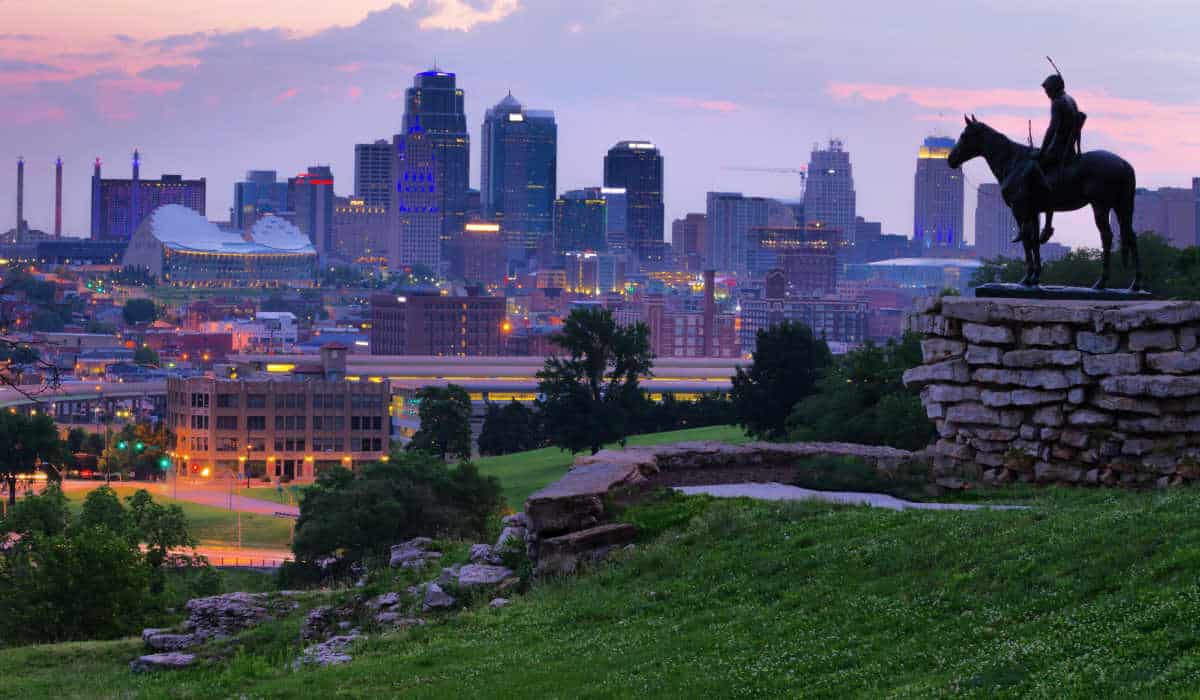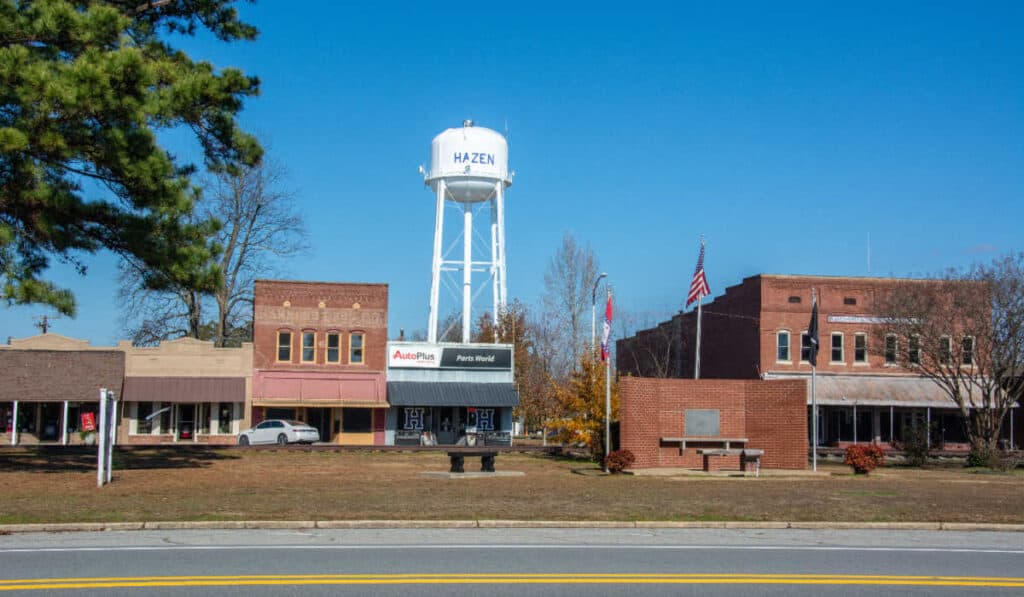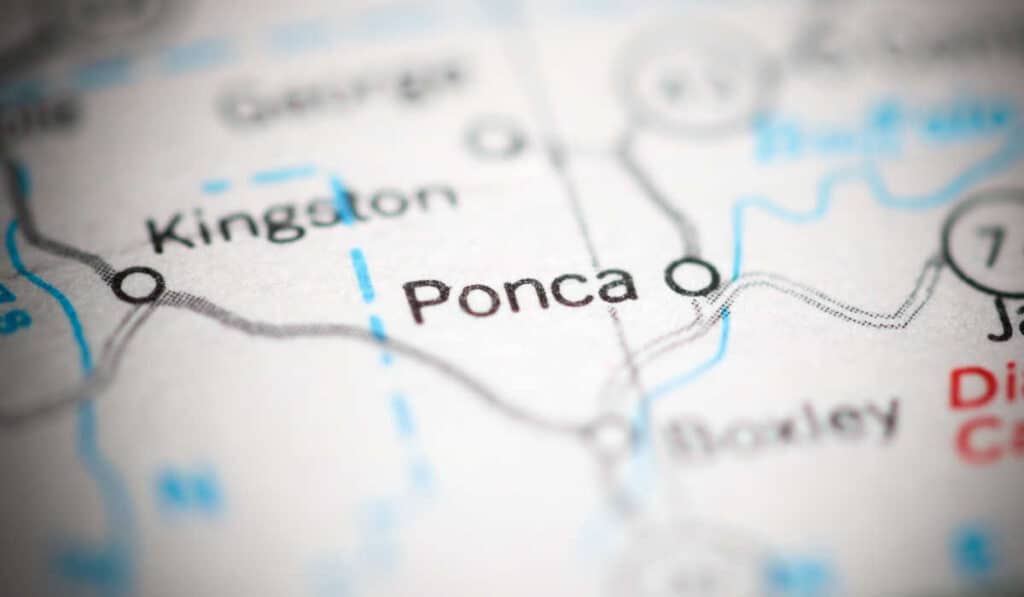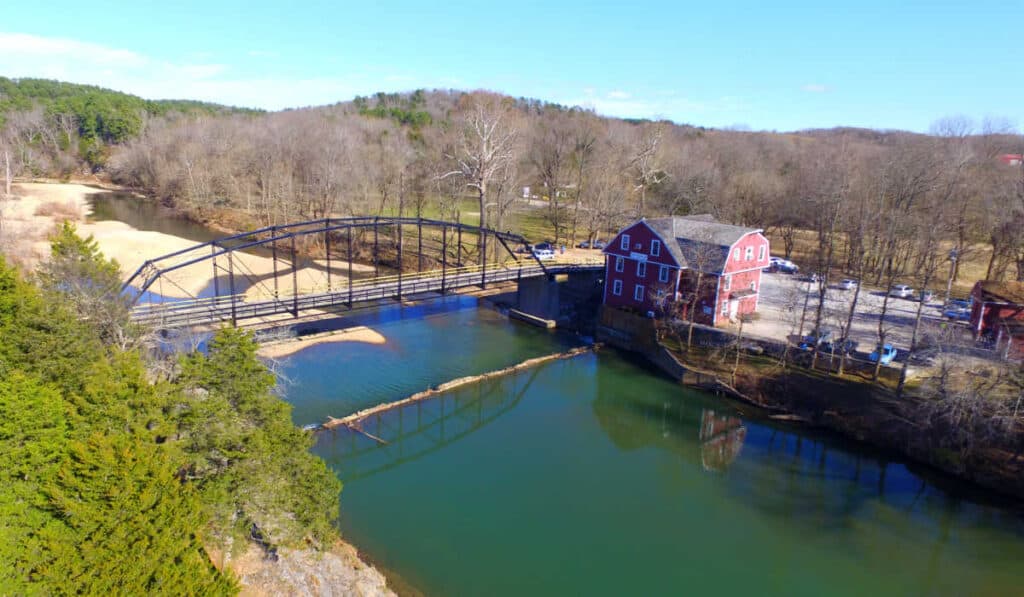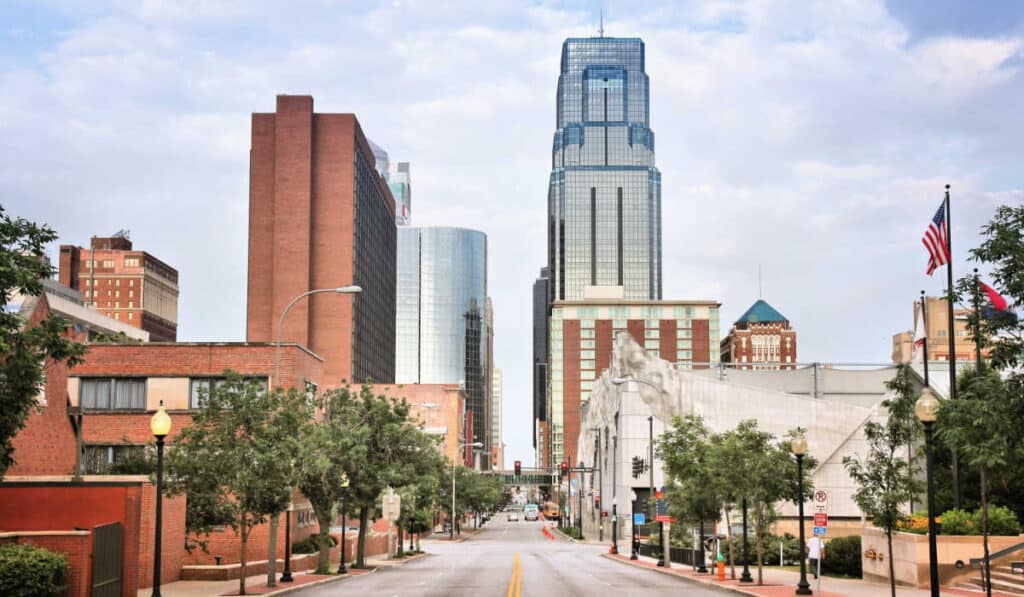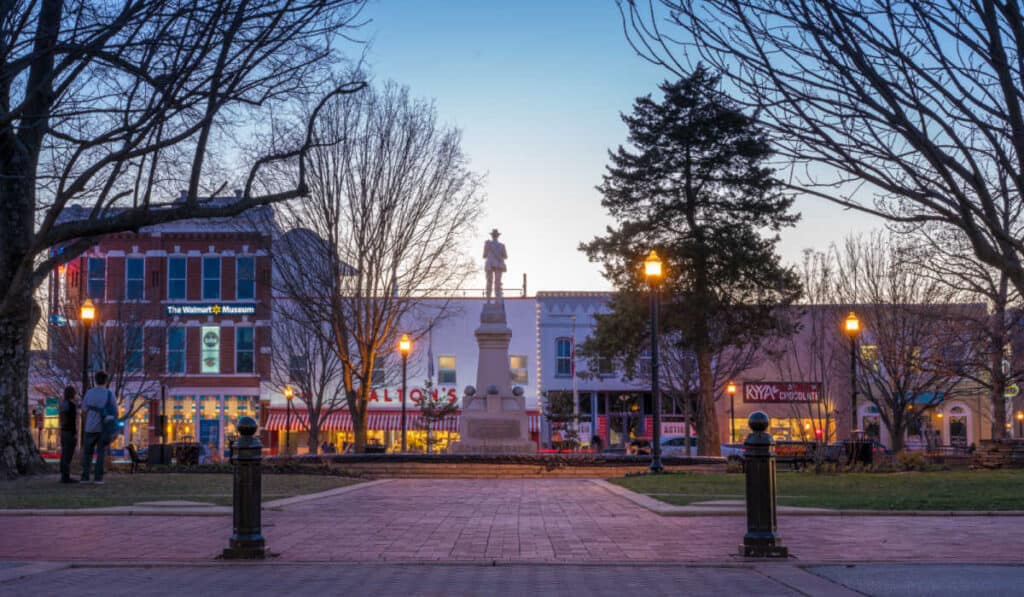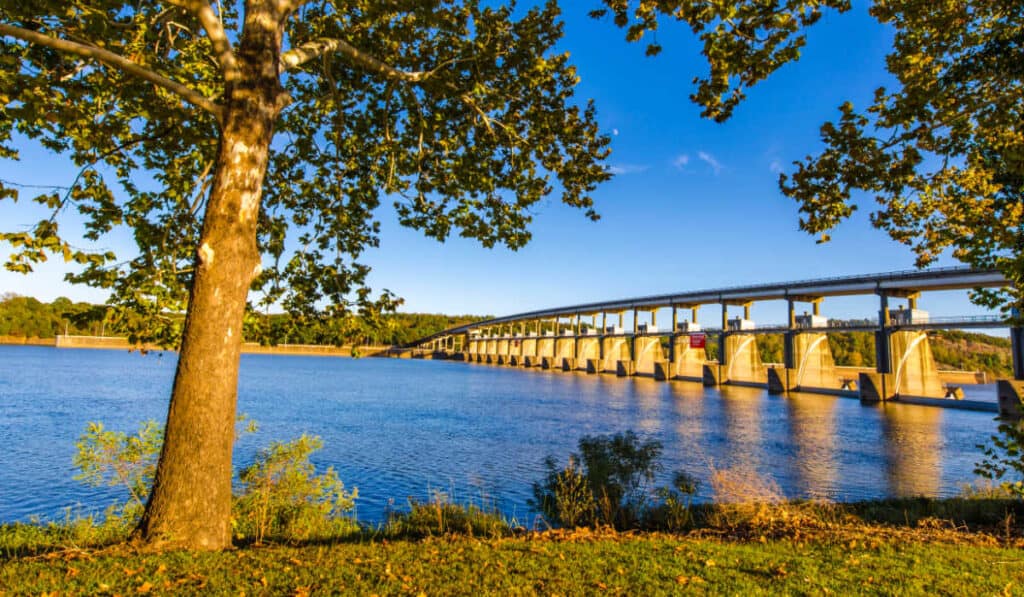Kansas City, Missouri, straddles the border between Missouri and Kansas, and is known for its rich history, unique culinary scene, and lively jazz music. Incorporated as a town on June 1, 1850, and later as a city on March 28, 1853, Kansas City has grown into a vibrant metropolitan area. Located at the confluence of the Kansas and Missouri rivers, its strategic position made it an attractive location for the establishment of settlements.
Among the numerous attractions that Kansas City has to offer, its jazz music history and delectable barbecue cuisine are the standout features. The city has played a significant role in the development of this musical genre, with its local jazz scene thriving since the early 20th century. In addition to its musical offerings, Kansas City is renowned for its mouthwatering barbecue, which draws foodies from near and far.

Visitors to Kansas City can also explore various cultural and historical sites, including interesting districts like Westport and the Power & Light District. With its bustling art scene, Midwest hospitality, and a plethora of events and festivals, there is no doubt that Kansas City has something special to offer to everyone who visits or calls it home.
History
Kansas City, Missouri, has a rich history that played a significant role in the westward expansion of the United States. Founded in 1838, it soon overtook its neighboring rival, Westport, to become the predominant city west of St. Louis. The confluence of the Kansas and Missouri Rivers at the city’s borders made it an ideal location for settlements.
Frenchman François Chouteau established one of the earliest European-American settlements in the area around 1821. John Calvin McCoy, an influential entrepreneur, later founded Westport in 1834 and played a pivotal role in the development and growth of Kansas City. Independence, a nearby city, served as the starting point for several important westward trails such as the Santa Fe and Oregon Trails, which passed through present-day Kansas City.
The Kansas City region experienced significant turmoil during the American Civil War. Missouri was a slave state, while neighboring Kansas Territory was a free state. This contrast led to fierce conflicts between pro-slavery and anti-slavery groups in the area. A decisive battle occurred on October 23, 1864, when Confederate General Sterling Price’s army was defeated by Union General Samuel Curtis’ army at the Battle of Westport. This marked the last major Civil War battle west of the Mississippi River.
After the Civil War, Kansas City continued to grow due to the construction of the Hannibal and St. Joseph Railroad, which facilitated trade and transportation in the region. The railroad’s arrival in 1864 fostered industrial and commercial development, further solidifying Kansas City’s importance in the region.
Kansas City, Missouri, also played a significant role in the nation’s cultural history. The Liberty Memorial, a prominent landmark, was built to honor those who fought in World War I and stands today as a symbol of freedom and liberty for all Americans.
In conclusion, Kansas City’s historic significance, strategic location, and role in events such as westward expansion, the American Civil War, and the growth of American industry have left a lasting legacy that continues to shape the city’s identity today.
Geography and Climate
Kansas City, Missouri is situated at the confluence of the Kansas and Missouri rivers, straddling the border between Missouri and Kansas. The city is located near the geographical center of the United States, surrounded by gently rolling terrain. Downtown Kansas City lies on the south bank of the Missouri River at the Missouri-Kansas state line.
The climate in Kansas City is a modified continental type, characterized by hot and humid summers with highs around 89 degrees in July, and cold winters with lows around 20 degrees in January. The city experiences frequent and rapid fluctuations in weather, particularly during the early spring. Kansas City receives an average of 42 inches of rain and 15 inches of snow per year, resulting in a BestPlaces Comfort Index rating of 7.2 out of 10 (10 being the most comfortable).
Some of the key areas within Kansas City include the West Bottoms, an industrial and entertainment district with a rich history, and North Kansas City, situated in Clay County across the Missouri River. Further out, surrounding suburbs such as Blue Springs, Overland Park, Olathe, Leavenworth, Gladstone, and Raytown are part of the broader Kansas City metropolitan area.
In terms of transportation, Kansas City was historically a hub for the Santa Fe and California trails and continues to be a significant center for rail and road connections. This strategic location makes the city a vital component in the movement of goods and people throughout the nation.
Culture and Arts

Kansas City, Missouri, boasts a rich and diverse arts and culture scene, which can be attributed to its history, museums, and architecture. Among the city’s most famous cultural attractions are the American Jazz Museum and the Nelson-Atkins Museum of Art. The former is situated in the heart of the historic Jazz District, 18th and Vine, and celebrates the city’s strong connection to jazz music. The latter, opened in 1933, features more than 35,000 works of art representing over 5,000 years of human history.
In addition to these renowned museums, Kansas City is home to the Kemper Museum of Contemporary Art, which showcases modern and contemporary works of art, and the Kauffman Center for the Performing Arts, an architectural marvel that hosts various live performances, including ballet, opera, and theater. The Kauffman Center exemplifies Kansas City’s commitment to showcasing an array of artistic talent and innovation.
The city’s historic association with jazz and blues music can be felt throughout various venues and events. Kansas City was once a hub of the jazz movement, fostering the careers of music legends like Count Basie and Charlie Parker. Today, visitors can still enjoy lively performances in the Jazz District or attend the annual Kansas City Jazz and Heritage Festival to experience the city’s deep-rooted musical heritage.
Kansas City’s architecture is another key element of its cultural identity, with notable landmarks like the iconic art deco Power & Light Building and the beautiful Country Club Plaza, which was influenced by Spanish architecture. The city’s creative texture can also be seen through its vibrant murals, sculptures, and public art installations.
Finally, it’s worth mentioning that Kansas City was once the home of a young Walt Disney, who opened his first animation studio, called Laugh-O-Gram Studio, in the city. This connection to Disney further showcases Kansas City’s rich history in arts and culture, making it a must-visit destination for art and music lovers from around the world.
Culinary Scene
Kansas City, Missouri, boasts a rich culinary scene that attracts food enthusiasts from all corners of the globe. The city is particularly famous for its barbecue, with a distinct style that has evolved since the early 1900s. Top places to taste Kansas City BBQ include Joe’s Kansas City Bar-B-Que, Fiorella’s Jack Stack Barbecue, Gates Bar-B-Q, and Arthur Bryant – each offering mouthwatering dishes like burnt ends, a local specialty.
Apart from barbecue, Kansas City’s culinary scene offers a variety of options to delight food lovers. Noteworthy classic dishes from the city are Stroud’s pan-fried chicken, which has been a local favorite since World War II. The success of the restaurant is reflected in its numerous branches across the metro and awards like the James Beard Award for Excellence in the “Home Style” category and Zagat award for Best Restaurant.
Kansas City’s food also extends beyond American comfort food, with a diverse range of international cuisines to savor. Traverse around the city, and you’ll discover delicious Mexican and Vietnamese dishes, among others. Room 39 is another local gem offering an unpretentious breakfast and lunch menu, with staples like breakfast burrito and veggie quiche in a cozy and welcoming atmosphere.
Culinary innovators continue to shape Kansas City’s food scene, bringing bold flavors and unique concepts to the city. Ça Va, a Westport Champagne bar, exemplifies this trend as an elegant, yet accessible, hotspot that has even caught the attention of The New York Times.
Finally, Kansas City is home to Russell Stover, an iconic American chocolate company. Known for their quality confections and wide range of treats, Russell Stover adds a sweet touch to Kansas City’s culinary reputation.
In summary, Kansas City’s culinary scene offers an impressive blend of local barbecue flavors, comfort food classics, diverse international flavors, and some indulgent sweet treats.
Sports and Recreation

Kansas City, Missouri, is home to a variety of sports teams and recreational activities that cater to the interests of residents and visitors alike. The city boasts a rich athletic history and a passionate fan base, making it a prime destination for sports enthusiasts.
Baseball is well-represented in Kansas City, with the Kansas City Royals of Major League Baseball (MLB) being a prominent team in the city. Established in 1969, the Royals are renowned for their achievements, including becoming the first American League expansion team to reach the playoffs, the World Series, and ultimately winning the prestigious championship in 1985 against their state rivals, the St. Louis Cardinals, in the “Show-Me Series.”
Kansas City is also a football city, home to the Kansas City Chiefs of the National Football League (NFL). The Chiefs have enjoyed recent success, including winning the Super Bowl in 2020. They have a dedicated fan base, making their games an electrifying experience.
The American Royal, a yearly event held in Kansas City, celebrates the city’s agricultural heritage by showcasing livestock, rodeo, horse shows, and other related events. It also features the ‘World Series of Barbecue,’ attracting participants from all over the world and further solidifying Kansas City’s reputation as a barbecue destination.
Apart from the professional sports scene, Kansas City offers various recreational opportunities for its residents and visitors. Swope Park, which spans over 1,805 acres, is twice the size of New York’s Central Park and houses several attractions within its boundaries, such as the Kansas City Zoo, Lakeside Nature Center, and a variety of hiking and biking trails.
In conclusion, Kansas City, Missouri, offers a dynamic and exciting sports and recreation scene. From the roaring fans at baseball and football games to the peaceful tranquility of Swope Park, there’s something in this city for everyone. The rich history of sports achievements, combined with the American Royal’s nod to Kansas City’s agricultural roots, makes it a unique and attractive destination for sports lovers and outdoor enthusiasts alike.
Attractions and Tourism
Kansas City, Missouri, offers a diverse range of attractions and activities for visitors to enjoy. One iconic destination is the Country Club Plaza, an upscale shopping district that boasts beautiful Spanish-inspired architecture. Here, travelers can indulge in high-end shopping, fine dining, and special events throughout the year.
Swope Park is another must-visit attraction in Kansas City, covering 1,805 acres—twice the size of New York’s Central Park. This spacious park features various recreational activities, from hiking trails and picnic areas to a renowned zoo and golf course.
Visitors keen on exploring Kansas City’s urban landscape will find their way to the popular downtown area of West Bottoms. This district has a rich history and is home to trendy restaurants, art galleries, and antique shops. Furthermore, Downtown Kansas City is recognized for its live music venues, sporting events, and the vibrant Power & Light District.
For those interested in historical sites and museums, Kansas City does not disappoint. The National World War I Museum and Memorial, dedicated to honoring those who served and died in the war, offers an informative and educational experience. Moreover, Union Station, a beautifully restored historic landmark, houses a science center, planetarium, and various exhibits catering to all ages.
In addition to these attractions, Kansas City hosts multiple events throughout the year. These events include the annual Plaza Art Fair, which showcases local and national artists, and the Westport St. Patrick’s Day Parade, a lively celebration of Irish culture and heritage.
Kansas City’s extensive metro system makes exploring the city’s attractions and tourism offerings convenient and efficient. As the largest city in Missouri, Kansas City, provides a wealth of exciting experiences for travelers and is a must-visit destination in the United States.
Education

Kansas City, Missouri, is home to a diverse range of higher education institutions that cater to various academic interests and career goals. The city offers numerous opportunities for students seeking quality education from reputable colleges and universities.
Rockhurst University is a private Jesuit institution founded in 1910. It is known for its strong programs in business, nursing, and the sciences. This university also emphasizes the importance of liberal arts learning to cultivate well-rounded individuals, critical thinkers, and community leaders.
Avila University was established in 1916 and is sponsored by the Sisters of St. Joseph of Carondelet. This Catholic university offers undergraduate and graduate programs in fields such as education, nursing, business, and the arts. Avila is committed to providing a supportive and personalized approach to education, emphasizing hands-on experiences, and service-learning opportunities.
Metropolitan Community College serves as a resource for local residents with multiple campuses throughout the Kansas City area. This community college provides affordable and accessible options for completing associate degrees or certificate programs, as well as transfer opportunities to four-year institutions.
William Jewell College is a private liberal arts college founded in 1849. It offers over 40 undergraduate majors and pre-professional programs in areas such as medicine, law, and engineering. Located in the nearby town of Liberty, the college encourages experiential learning and global engagement through study abroad programs and internships.
Park University in Parkville is also a popular choice among students. Established in 1875, the university boasts a diverse student body, with learners from across the globe and various academic backgrounds. It offers programs like criminal justice, nursing, and aviation, among many others.
Kansas City Art Institute, founded in 1885, is dedicated to the development of artists, designers, and creative professionals. It offers a range of programs in areas such as animation, ceramics, graphic design, and photography. The institute is accredited by the National Association of Schools of Art and Design.
Lastly, the Church of the Nazarene, a Christian denomination, has its North and South campuses within Kansas City, Missouri. These institutions focus on preparing students for various ministry roles, teaching in diverse theological fields, and providing resources for spiritual growth.
In summary, Kansas City’s education scene is rich and varied, offering quality options for students of all interests and aspirations.
Nickname and Symbols
Kansas City, Missouri is known by several nicknames that showcase its unique identity and rich history. One of its most famous monikers is the City of Fountains. This nickname stems from the fact that Kansas City is home to over 200 fountains, making it a city with one of the highest number of fountains per capita in the world. These fountains contribute to the city’s aesthetic appeal and serve as symbols of its proud and distinctive character.
Another celebrated nickname is the Heart of America. This name reflects Kansas City’s central location within the United States, as it is situated within 250 miles (400 km) of both the geographic and population centers of the country. This central location gives it a unique vantage point, making it a significant regional hub for commerce and culture.
Kansas City is also referred to as the BBQ Capital of the World due to its well-known barbecue tradition and the many top-notch BBQ restaurants within the city. This nickname showcases the city’s world-renowned culinary scene, which has undoubtedly made Kansas City a destination for food lovers.
Lastly, the city has been called the Cradle of Jazz and the Jazz Capital of the World. This nickname is an homage to its rich musical heritage, which played a significant role in the development of American jazz music. The city’s thriving jazz scene can still be experienced today in its numerous music venues and live performances.
In summary, Kansas City’s nicknames and symbols paint a vivid picture of its unique characteristics, including its multitude of fountains, central location, iconic barbecue tradition, and storied jazz history. These aspects of the city are sources of great pride for its residents and contribute to its remarkable identity.
Transportation
Kansas City, Missouri, boasts a robust and diverse transportation system that serves its residents and visitors alike. At the heart of its transportation network lies the Kansas City International Airport (MCI). MCI serves as a vital hub for both domestic and international flights, connecting the city to numerous destinations across the globe.
In addition to air travel, Kansas City has a comprehensive public transit system managed by RideKC. This system includes buses, streetcars, and on-demand services designed to accommodate the varying needs of the city’s population. The free KC Streetcar has become a popular option for navigating the downtown area, with its 2-mile route encompassing key attractions and landmarks.
For commuters who prefer traveling by car, Kansas City’s extensive road network ensures easy access to different parts of the city and the surrounding areas. Major highways, such as Interstate 70 and Interstate 435, connect Kansas City to other parts of the state and neighboring cities. Meanwhile, ample parking facilities can be found throughout the city, particularly in the downtown area.
Kansas City also makes an effort to promote sustainable transportation options. The city boasts numerous bike lanes and trails for cyclists, as well as bike-sharing programs like BCycle that encourage residents and visitors to explore the city on two wheels.
In conclusion, Kansas City’s transportation offerings cater to a wide range of preferences and needs, making it easy for people to travel and enjoy all that the city has to offer. From its international airport to its progressive public transit options, Kansas City is a well-connected and easy-to-navigate destination.
Demographics
Kansas City, Missouri has a diverse population with a rich history, dating back to its incorporation as a town in 1850 and as a city in 1853. Straddling the border between Missouri and Kansas at the confluence of the Kansas and Missouri rivers, the area was considered a good place to build settlements.
As of July 2022, Kansas City’s population is not provided in the given search results. However, historical data indicates that the population has grown significantly over the years and is made up of people from various racial and ethnic backgrounds.
The city’s households consisted of an average of 2.31 persons per household during the years 2017-2021. In that same time span, 82.3% of Kansas City’s residents aged one year or older lived in the same house for more than a year. The diverse language landscape is evidenced by a percentage of 11.9% of persons aged five years or older who spoke a language other than English at home (2017-2021).
In terms of technology, households in Kansas City demonstrated a strong computer and internet usage, with a significant percentage of households owning a computer during the years 2017-2021. This indicates that access to technology and information is readily available for most residents in the city.
Miscellaneous
Kansas City, Missouri, boasts a rich history filled with fascinating events and notable landmarks. One such historical event was the Prohibition era, during which the city gained a reputation for its anti-prohibition stance, allowing alcohol to flow freely in speakeasies and nightclubs. Today, visitors and locals alike enjoy the strong brewing culture and festive atmosphere that persists throughout the year.
The city’s impressive skyline is a testament to its continuous growth and architectural prowess. With both modern and traditional structures, Kansas City’s skyline reflects the area’s innovative spirit and ambition.
A haven for sports enthusiasts, Kansas City houses the Negro Leagues Baseball Museum, preserving the history of African American baseball and its influence on American sports. The city also offers the Grandview – a scenic spot that provides breathtaking views of the entire metropolis for visitors to enjoy.
As a hub of various cultures, Kansas City is home to individuals from Europe, Asia, and beyond, creating a diverse and lively atmosphere. The city celebrates a multitude of holidays throughout the year, embracing customs from around the world and enriching the local community.
In Kansas City, you can experience all four seasons – winter, spring, summer, and fall – with distinct weather patterns and unique festivities for each. From cozy winter nights to lively spring days and enchanting fall colors, the city offers an array of experiences for its residents and visitors alike.
The government plays an essential role in ensuring Kansas City’s progress and prosperity. With a focus on improving infrastructure and services, the government collaborates with various sectors and communities to maximize the city’s potential for growth and success. In doing so, Kansas City continuously evolves to meet the needs of its dynamic population.

